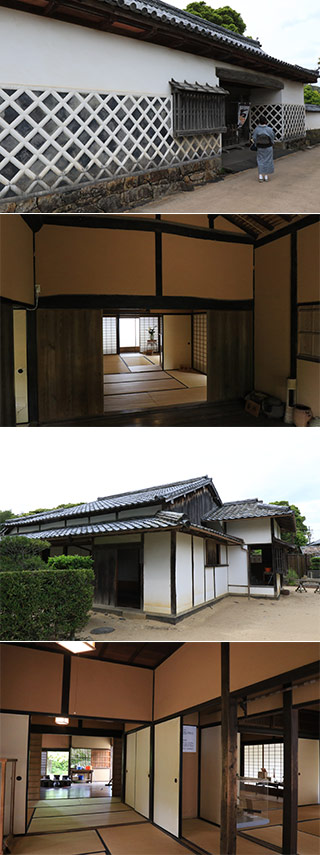The former home is a fine example of a high-ranking samurai residence from the Edo period. The nagayamon gate and hite earthen walls that surround the buildings inside are particularly well preserved.
Many small details inside the house indicate the status of the Kuchiba family. For example, most of the rooms have high ceilings, implying that the family had enough land that they did not need attic space for storage. Unusually this room, called an ai-no-ma, or "in-between space," is sandwiched between two of the house's main rooms. Guards would hide in the small space to spring to their master's defense in the event of an attack. These spaces were nicknamed musha kakushi. Today, the residence is open to the public and Edo-period weaponry and other samurai accouterments are displayed inside one operation and move samurai to the most effective fighting location. The weapons on display, however, are inlaid with precious metals and thus were likely "vanity weapons" for ceremonial rather than official use.






